4
Artificial Intelligence for Modeling and Optimization of the Biogas Production
Narendra Khatri1* and Kamal Kishore Khatri2
1Department of Mechatronics, Manipal Institute of Technology, Manipal Academy of Higher Education, Manipal, India
2Department of Mechanical-Mechatronics Engineering, The LNM Institute of Information Technology, Jaipur, Rajasthan, India
Abstract
The artificial intelligence (AI) is emerging nowadays, making human life easier. As the area of renewable energy is growing significantly for the sustainable development, the deployment of AI can help greatly to achieve its goals. The biogas is source of renewable energy, which is generated from the anaerobic digestion of the biomass, cow dung, wastewater sludge, and kitchen waste, etc. Anaerobic digestion is a non-linear biological process where biomass is digested to generate biogas and slurry in the absence of oxygen. AI models have been developed for the prediction of yield and energy content of the produced biogas. This chapter presents a comprehensive review of AI techniques for the modeling of the biogas production process. The literature on the applications of artificial neural network models and evolutionary algorithms related to anaerobic digestion has been compiled and synthesized. The integration of appropriate AI technique in biogas has been reviewed for optimum biogas production round the year.
Keywords: Artificial intelligence, artificial neural network, evolutionary algorithms, genetic algorithm, particle swarm optimization, ant colony optimization
4.1 Introduction
Artificial intelligence (AI) is an emerging area of research. The application of AI is continuously increasing in the area of renewable energy. Various renewable energy sources are explored till now and many more in pipeline. The biofuels are produced for the biomass. These are good sources of renewable energy and can be used to replace the fossil fuels. The biogas is derived by anaerobic digestion/co-digestion of the biomass, cow dung, wastewater sludge, and kitchen waste. The biogas generation is a biological process in which the biomass is digested through biochemical method; it coverts organic matter to biogas and slurry using bacterial consortium in the absence of oxygen [1]. The generated gas is a mixture of methane, carbon dioxide, and trace amount of other gases such as hydrogen sulfide, ammonia, and hydrogen. The slurry generated in the process has valuable agronomical features [2].
Anaerobic digestion process of biomass for generation of biogas is also known as biomethanization. It is a natural biochemical process and takes place under the controlled environment without oxygen. Biomethanization takes place in main four steps, viz., hydrolysis, acidogenesis, acetogenesis, and methanogenesis. During the biomethanization process various complex organic compounds are formed, and formation of end product as methane along with nutritious effluents. Figure 4.1 shows the principal of biogas generation. Once the biomass is fed to the bioreactor, first biochemical process (hydrolysis) of the biomass gets started. The biomass is composed of proteins, carbohydrates, and lipids which are transformed into amino acids, sugars and fatty acids in hydrolysis process. The amino acids and sugars are being converted in to propionate and butyrate (intermediary products) during the acidogenesis process. Acetogenesis is a chemical process in which intermediary products are converted to acetate and hydrogen. During the methanogenesis process the acetate and hydrogen compounds are transformed into methane. Figure 4.2 shows the pictorial view of biogas generation plant at the LNMIIT, Jaipur.

Figure 4.1 Principal of biogas generation.
Anaerobic digestion is strongly dependent on environmental parameters, such as temperature, pH, alkalinity, acidity, ammonia concentration, and organic load [3–5]. Therefore, control of operational parameter is a priority for bioprocess optimization. The small changes in the operational parameters results in significant change in the biogas yield and composition. Hence various models of anaerobic digestion process have been developed to optimize the process [6]. The mechanism of anaerobic digestion is very complex since it relies on both endogenous and exogenous variables. The researchers have conducted various studies to identify and assess the effect of various parameters [7–9].
The application of AI for modeling to optimize biogas yield, to control and diagnose faults in AD system are critical aspects of the biogas production process. Various types of ANN models have been developed for prediction of yield, energy content and composition of the produced biogas.
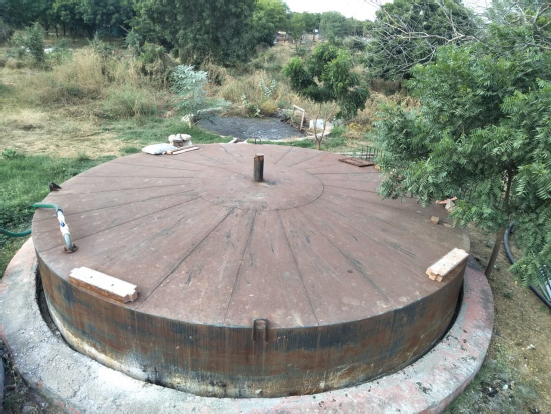
Figure 4.2 Biogas generation plant at the LNMIIT, Jaipur.
Nature inspired algorithms are also used along with the ANN models to optimize the biogas yield [10–14].
This chapter is an overview of the integration of AI in the area of biogas production. This chapter is organized into four main sections. The first section gives a brief overview of the biogas production process, need of modeling, and identification of critical parameters which are modeled and controlled for biogas production and optimization. The second section presents artificial neural network (ANN) architecture, training algorithms, and application of ANNs in biogas production processes. In the third section, evolutionary algorithms, viz., GA, ACO, and PSO, are briefly presented and discussed. This chapter covers important AI techniques for optimization of biogas production.
4.2 Artificial Neural Network
ANN is a well known AI technique used for modeling and optimization of complex nonlinear processes. ANN is one of the most used techniques for modeling the nonlinear processes. ANN models are data driven. The real-time or experimental data is used for the model development. The experimental dataset is divided into three different sets, i.e., training, testing, and validation datasets. These datasets are used to train, test and validate the model respectively. Once an ANN-based process model with reasonably good generalization potential is developed, it is possible to optimise its input space effectively to obtain the desired (optimum) values of process variables.
4.2.1 ANN Architecture
ANNs are complex structure which can take several inputs, process it, and produce the single/multiple output. ANN’s work is to mutate the input information into consequential useful output. Figure 4.3 represents the basic architecture of the ANN; it can have three types of layers, i.e., input, output, and one or multiple hidden layers within. The neurons are the fundamental unit of the neural network. These neurons receive inputs from other nodes of the network or an external source. Each node of the input layer is connected to each node of the hidden layer, equally all the nodes of the hidden layer are connected to each node of the output layer, and each connection between these nodes has a specific weight. Weights are allocated to a neuron depending on its perceived worth to other inputs.
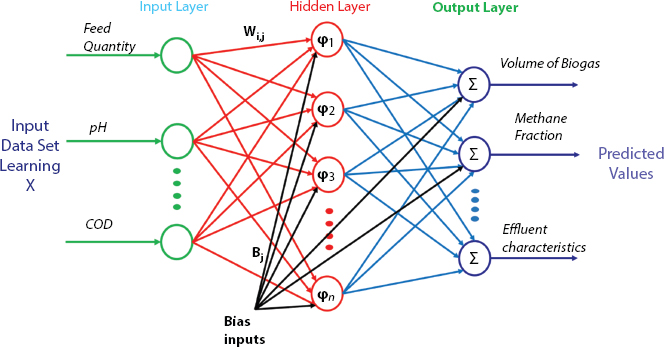
Figure 4.3 Basic artificial neural network architecture.
All input layer node values are multiplied with the assigned weight to their interconnection and summarized to generate the first hidden layer value. Mathematically: The inputs of pth neuron ![]() where q is the number of neurons linked to the pth neuron) are multiplied by their weights (Wi,p) and summed. This generated sum is added with the bias input of pth neuron (Bp) to form Σp [Equation (4.1)]
where q is the number of neurons linked to the pth neuron) are multiplied by their weights (Wi,p) and summed. This generated sum is added with the bias input of pth neuron (Bp) to form Σp [Equation (4.1)]
The resultant value (Σp) is fed to activation function, i.e., fa(Σp). Each neuron is connected to other by the weighted connection; the weight of these connections is updated during neural network training [15]. The hidden layer of neural network performs main computation; therefore, it collects all the input from the input layer and processes these inputs through the respective weights and performs necessary calculations to generate meaningful results. The computed results are processed and presented through the output layer for user understanding.
In ANN, flow of information takes place in two ways, i.e., feedforward and feedback. In feedforward network, the flow of information is unidirectional. In feedback network, it uses the internal memory to process the sequence of input data. In feedback network, information can travel in both forward and backward direction. Figure 4.4 shows the backpropagation type neural network. The reference signal feedback enables the neural network to predict more close to the actual value.
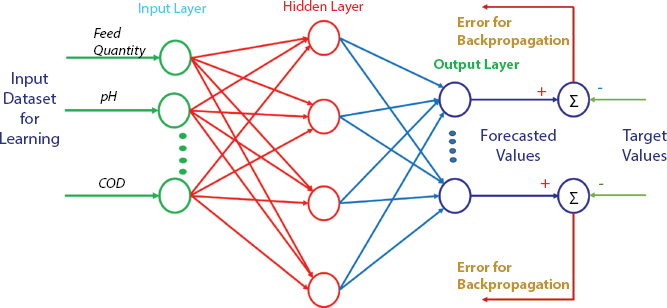
Figure 4.4 Feedback propagation artificial neural network.
The ANN model is modeled in three steps, i.e., training, testing, and validation. The input data is divided into three sets to perform these operations. To train the neural network, training datasets are used; in training, the weights between the nodes are updated. Validation data sets are used to fine tune neural network performance and test data sets are used to assess neural network precision and error margin. Neural network algorithms are implemented for training after classification of the data in these three sets. Optimizer is used to facilitate the training optimization. The optimization algorithm is chosen based on model’s specifications such as memory, numerical precision and processing speed.
4.2.2 Training Algorithms
The identification of the fastest training algorithm is very difficult for the given problem. The speed of the training algorithm depends upon various factors, viz., problem complexity, training data set size, the number of weights and biases in the network, the error goal, and the application area of the network. The most used ANN training algorithms are Levenberg-Marquardt, Resilient backpropagation, and BFGS Quasi-Newton.
4.2.3 Performance Parameters for Analysis of the ANN Model
The developed ANN models are assessed using statistical parameters, viz., mean absolute deviation (MAD), mean square error (MSE), root mean square error (RMSE), and correlation coefficient (R) [16, 17]. Equations (4.2) to (4.5) represent the mathematics behind these statistical parameters.
where z and zʹ represent actual and predicted data.
4.2.4 Application of ANN for Biogas Production Modeling
ANNs are used to model the behavior of different linear and non-linear processes with higher accuracy. ANN models are developed to predict biogas yield and composition of produced biogas from the bioreactor. The model efficiency is depending upon the data quality and quantity for model training. The wider the data set (collection of input data points along with the proportional outputs) better the model performance. Researchers have developed various ANN models for the prediction of biogas production.
Dahunsi et al. have predicted the biogas production potential in the anaerobic digester using ANN model with HLR, HRT, TS, Top, VS, and pH [18]. Similarly, Holubar et al. developed a model to predict the biogas yield and composition of the produced biogas by the anaerobic digestion of lingocellulosic. The prominent input parameters for modeling are pH, VFAs, COD, and VS [20]. Clercq et al. have developed a software tool based on machine learning for biogas yield prediction in industrial scale bioreactor. Logistic regression, support vector machine (SVM), random forest, and k-nearest neighbors (KNN) are used for the biogas yield prediction. The KNN is predicting the biogas yield with the accuracy of 87%, which is highest among all the models developed [21].
Table 4.1 Some important applications of ANN technology for the development of biogas predication model in anaerobic digestion process.
| S. no. | Name of artificial neural network model | Objective | Input parameter(s) | Output parameter(s) | Optimum model(s) | Result(s) | Ref. |
| 1 | Hierarchical neural networks | To design and develop artificial neural network based prediction model to control anaerobic digestion process | Feeding rate, pH, chemical oxygen demand, VFA concentration, redox potential, VSS, biogas composition, methane production rate, and effluent | Optimum feed composition, composition of produced biogas, rate of methane production | FFBP ANN with 9-3-2 for the biogas composition and methane production rate | The developed model could be used for forecasting and control of anaerobic digestion process. | [19] |
| 2 | Feedforward neural network | To forecast trace compounds in anaerobic digestion biogas | In H2S model: Sulfate loading rate, OLR, and H2S in biogas (ppm). In NH3 model: total nitrogen loading rate, OLR and NH3 in biogas (ppm), biogas productivity, pH, ammonia in the digester | Proportion of H2S (ppm) and ammonia (ppm) in biogas | For prediction of H2S-5 neurons in the hidden layer For prediction of NH3-7 neurons in the hidden layer. | The developed models predicted H2S and NH3 traces satisfactorily in the produced biogas. | [24] |
| 3 | Three-layer ANN model | To predict the methane proportion and biogas yield from the molasses wastewater treatment using pilot-scale mesophilic UASB reactor. | Organic loading rate, pH volatile fatty acid concentrations, Temperature, alkalinity, COD for influent, and effluent. | Methane percentage in produced biogas and biogas yield | Biogas model: 8-9-1 with SCG (train-scg) algorithm Methane model: 8-12-1 with SCG (train-scg) algorithm | The ANN models developed with SCG training algorithm have estimated biogas and methane production. | [20] |
| 4 | BPNN | To forecast the percentage of methane in biogas produced from landfill upon injection of liquid organic waste | Rate of extraction of landfill gas in (m3/h) and landfill leachate: food waste leachate | Percentage Methane content (%) | Extreme learning machine based ANN with high R value and minimum MAPE | The developed model performance is exceptionally high and significant. | [25] |
| 5 | ANN and Principal component analysis ANN (PC-ANN) | To forecast carbon (C) and nitrogen (N) in different blends of seven substrates. | C/N ratio, VS Loading, protein, VFA, lipid, Carbohydrate, lignin, TKN and TAN in the substrates | Methane yields, concentration of COD and | Principal component analysis ANN (PC-ANN) | The developed model can predict and optimize the nutrient recycling in anaerobic digestion process. | [26] |
Sakiewics et al. developed an ANN model for the integrated wastewater treatment facility of 27 MLD at Rybnik, Poland. ANN model is developed with seven main plant operational parameters for the prediction of biogas; it is observed that five out of seven are affecting the biogas yield. Simultaneously, sensitivity analysis is performed; it is observed that COD, BOD, TSS, P, and N concentration of wastewater are the parameters which effects the biogas yield [22]. Almomani developed an ANN-based prediction model for biogas yield in chemically treated co-digested agriculture waste. The prediction accuracy of cumulative methane percentage is more than 90% [23].
The literature review reveals that ANN is an efficient technique for modeling and predicting impact of different process parameters on bio-gas yield and composition under mesophilic or thermophilic conditions. The production of biogas can be optimized by optimization of parameters under favorable digestive conditions once the parameter effects have been identified. Table 4.1 shows some of the important applications of the ANN modeling for the prediction and control of biogas production through anaerobic digestion process.
4.3 Evolutionary Algorithms
Nature evolution has profoundly impressed scientists with the ideology underlying it to establish methods of evolutionary optimization process. The evolutionary algorithms are created by materializing the behavior of different species into mathematical patterns [27]. The most famous are genetic algorithm (GA), ant colony optimization (ACO), and particle swarm optimization (PSO).
4.3.1 Genetic Algorithm
The GAs are biologically inspired and effective domain-independent search methods, developed in the 1970s by John Holland at University of Michigan. These methods can facilitate the efficient solution of problems in various application domains. From the AI research viewpoint, it offers an outstanding learning mechanism. GAs are a special class of evolutionary algorithms; typical strategies in all GAs are inheritance-birth traits, mutation-change to prevent resemblance, natural selection-variation improve longevity, and crossover recombination. Best use of GAs has been found when the objective function is discontinuous, strongly nonlinear, high dimensional, stochastic, undefined, and inconsistent derivatives.
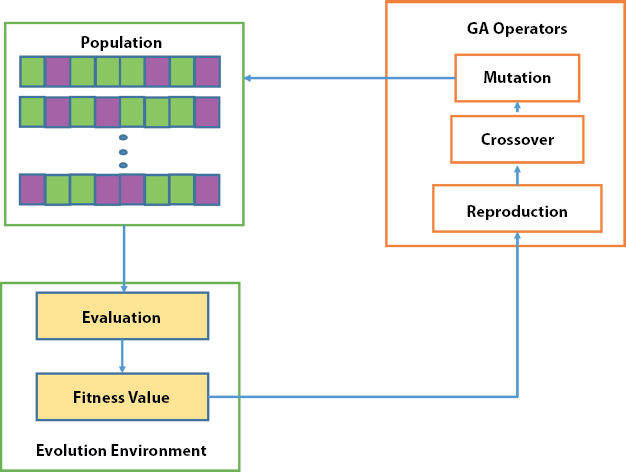
Figure 4.5 Genetic algorithm evaluation flow.
GAs are not too fast, but they cover a wide variety of features, are capable of rapidly identifying promising areas of search space but can take a reasonably long time to achieve an optimum solution. For combinational problems, GAs are good heuristic, generally emphasizing the combination of good parent (crossover) information. Different GAs use different representation, mutation crossover, and selection mechanism, Figure 4.5 represents the evolution flow of GAs.
4.3.2 Ant Colony Optimization
ACO is a component of swarm intelligence used for optimization of computational problems; it is probabilistic technique uses graphs to find the optimum path. Ants lay a trail of pheromones to inform other ants to follow the path in search of food. Once a food source is found, the ant who discovered it communicates this information to its peers and they follow the pheromones trail of that ant. As more number of ants travels to the food source, they also lay their own pheromone on the path, which makes it thicker resulting more and more ants get attracted. If an obstacle arrives along the desired route, then the ants quickly change the path and take the next most efficient path to the food presented in Figure 4.6. A high pheromone level on the correct path provides a better stimulus to the ant and has a greater chance of turning right.
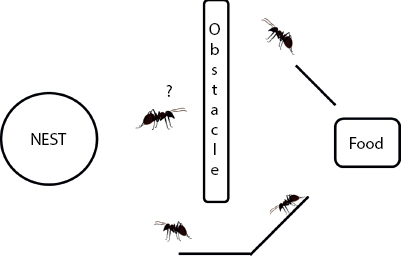
Figure 4.6 Path of ant when there is an obstruction.
Artificial ants reflect multi-agent strategies that are inspired by the behavior of real ants. Pheromone is deposited by ants as they travel, and successive ants prefer pathways of more pheromone. Without any direct communication between them, the ants quickly leave other trails to focus on the shortest, as presented in Figure 4.7 [28].
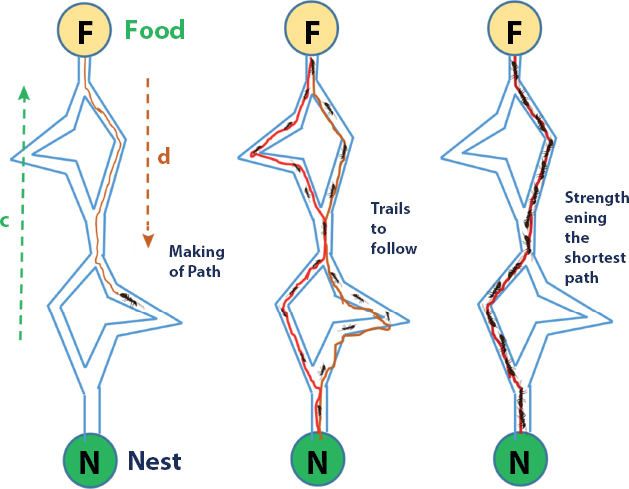
Figure 4.7 Ant colony optimization.

Figure 4.8 Swarm of birds [30].
4.3.3 Particle Swarm Optimization
PSO is one of the most popular and efficient algorithms. It is proposed by Kennedy and Eberhart [29]. It is inspired by swarm behavior, such as fish or birds (Figure 4.8) and is highly effective in a number of optimization problems. Each candidate solution is called as particle. The population is set of vector and is called swarm. Particle changes their components and move (fly) in space. They can evaluate their actual position using the function to be optimized. The function is called as fitness evaluation.
In PSO, possible particles travel to reach the global optimum in the search field. This movement is based on right control parameter combinations and a substitution formula. Particles also modify their positions with their own location called Pbest (particle best) and the best position of the swarm Gbest (global best). When a better solution is found by any particle, all particles augment their position in the search space for this better solution [31]. The flowchart for PSO is given in Figure 4.9.
4.3.4 Application of Hybrid Models (ANN and Evolutionary Algorithms) for Biogas Production Modeling
The integration of the ANN along with the evolutionary algorithms is used for the prediction and optimization of various nonlinear biological processes such as anaerobic digestion process. Popular evolutionary algorithms used are GA, ACO, and PSO. The combination of these algorithms and ANN model is to model the complex engineering problem, viz., estimation of the biogas yield and percentage of methane content in the produced gas. These hybrid models are used to optimize and select the input values to produce the optimum output. Table 4.2 presents some important applications of combinational models of ANN along with the evolutionary algorithms for optimizing the anaerobic digestion processes.
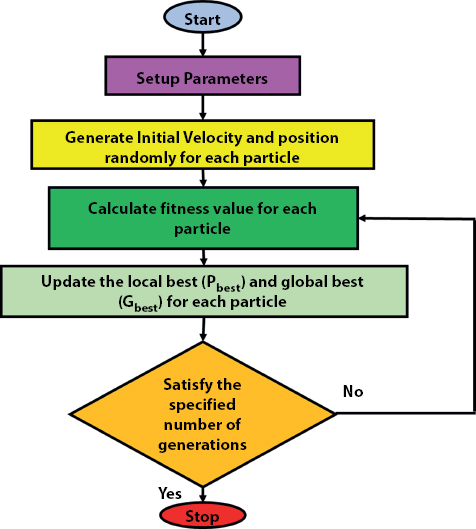
Figure 4.9 Flowchart of particle swarm optimization.
4.4 Conclusion
Various AI techniques were used to model and optimise biogas production processes due to its capacity to manage complexity, nonlinearity, and digestion uncertainty. The researchers are applying these advanced computational modeling techniques on the biogas processes due to the need of quick and precise control of the biogas production system. AI and evolutionary algorithms can act as promising techniques to model, optimise and govern biogas production processes. Although these advanced techniques have very seldom been used in real time to monitor and control digestion processes. So, in future, it is aimed to use these advanced modeling and optimization algorithms to control and monitor anaerobic digestion process in real-time for the biogas production and optimization.
Table 4.2 Some important applications of combination of artificial neural network models along with the evolutionary algorithms for optimizing the anaerobic digestion processes.
| S. no. | Type of feed stoke | Objective(s) | Model(s) for prediction | Algorithm used for optimization | Optimal value of model inputs | Optimal value of the model outputs | Ref. |
| 1 | Karanja Seed Cake and Cattle Dung | To model and optimize the biogas production through ANN and GA | A multi-layered feed-forward neural network | GA | pH 6.68, digestion time of 14.22 days, C/N (24.1:1) | Biogas yield, 89.8%; Methane yield, 73%. | [32] |
| 2 | Wastewater sludge | To model the anaerobic digestion process and optimize biogas yield for wastewater sludge in Hurma WWTP Antalya, Turkey | Multi-layer perceptron neural network | PSO | pH, 6.87; T (°C) 35.8; SLR (m3/day) 371.5; TS (mg/l) 22,090; TVS (mg/l) 18,361; VFA (mg/l) 17.04; ALK (mg/l) 3,934; SRT (day) 18.05; OLR (kg/m3 day) 2.02 | Biogas yield, 3,322m3/day; max methane percentage, 66.8%; rise in methane percentage with respect to avg. value, 4.8%; rise in biogas yield with respect to the avg. value, 64%; decrease in CO2 and other contents, 8.5%. | [31] |
| 3 | Banana stem, paper waste, rice bran, saw dust, and Cow dung | To optimize best co-substrate combination for optimum biogas yield | Feedforward multilayer ANN | GA | Concentration of paper waste 25%, rice bran 5%, saw dust 20%, cow dung 25%, and banana stem 25%. | Biogas yield of 10,280 ml which is 8.64% higher in comparison with non-optimized yield. | [10] |
| 4 | Agriculture Substrate | To develop a quick and accurate model for biogas yield prediction | A two-layer FFANN | ACO | Concentration of Pheromone Inert particulates, 0.71; Long chain fatty acids, 0.81; Inorganic nitrogen, 0.74; Amino acids, 0.86; Sugars, 0.76; Inert solutes, 0.69; Proteins, 0.87; Acetic acid, 0.74; Composites, 0.78; Lipids, 0.81; Carbohydrates, 0.95. | R2 of 0.89 for the biogas production and error of 5.1% | [33] |
| 5 | Agriculture Substrate | To predict the biogas yield based on feature selection through ANN and GA-ACO | Multi-layered ANN | GA-ACO | Neutral detergent fiber (NDF), HRT, TS, n-butyric acid, and Acid detergent lignin (ADL) | R2 of 0.90 and Prediction error of 6.24% | [34] |
| 6 | Cattle manure (CM) and Palm oil mill effluent (POME) | To predict and optimize biogas generation in solar based AD of POME and CM | FF-ANN | PSO | POME: CM (50:50) OHP doses (%) 1.00% NH4HCO3 doses (mg/L) -0 | Biogas yield 2,462.72 ml | [13] |
References
1. Khatri, N. and Khatri, K.K., Hydrogen enrichment on diesel engine with biogas in dual fuel mode. Int. J. Hydrogen Energy, 45, 11, 7128–7140, Feb. 2020,.
2. Demirbas, A., Taylan, O., Kaya, D., Biogas production from municipal sewage sludge (MSS). Energy Sources Part A Recovery Util. Environ. Eff., 38, 20, 3027–3033, 2016.
3. Cuadros, F., López-Rodríguez, F., Ruiz-Celma, A., Rubiales, F., González-González, A., Recycling, reuse and energetic valuation of meat industry wastes in extremadura (Spain). Resour. Conserv. Recycl., 55, 4, 393–399, 2011.
4. Mata-Alvarez, J., Dosta, J., Romero-Güiza, M.S., Fonoll, X., Peces, M., Astals, S., A critical review on anaerobic co-digestion achievements between 2010 and 2013. Renewable Sustainable Energy Rev., 36, 412–427, 2014.
5. Yadvika, S., Sreekrishnan, T.R., Kohli, S., Rana, V., Enhancement of biogas production from solid substrates using different techniques - A review. Bioresour. Technol., 95, 1, 1–10, 2004.
6. Kythreotou, N., Florides, G., Tassou, S.A., A review of simple to scientific models for anaerobic digestion. Renewable Energy, 71, 701–714, 2014.
7. Carrère, H. et al., Pretreatment methods to improve sludge anaerobic degradability: A review. J. Hazard. Mater., 183, 1–3, 1–15, 2010.
8. Khalid, A., Arshad, M., Anjum, M., Mahmood, T., Dawson, L., The anaerobic digestion of solid organic waste. Waste Manage., 31, 8, 1737–1744, 2011.
9. Horváth, I.S., Tabatabaei, M., Karimi, K., Kumar, R., Recent updates on biogas production - A review. Biofuel Res. J., 3, 2, 394–402, 2016.
10. Gueguim Kana, E.B., Oloke, J.K., Lateef, A., Adesiyan, M.O., Modeling and optimization of biogas production on saw dust and other co-substrates using Artificial Neural network and Genetic Algorithm. Renewable Energy, 46, 276–281, 2012.
11. Rego, A.S.C., Leite, S.A.F., Leite, B.S., Grillo, A.V., Santos, B.F., Artificial neural network modelling for biogas production in biodigesters. Chem. Eng. Trans., 74, March, 25–30, 2019.
12. Ramachandran, A., Rustum, R., Adeloye, A.J., Review of anaerobic digestion modeling and optimization using nature-inspired techniques. Processes, 7, 12, 1–12, 2019.
13. Zaied, B.K. et al., Prediction and optimization of biogas production from POME co-digestion in solar bioreactor using artificial neural network coupled with particle swarm optimization (ANN-PSO). Biomass Convers. Biorefin., 10, 1–16, 2020.
14. Li, X., Sha, J., liang Wang, Z., A comparative study of multiple linear regression, artificial neural network and support vector machine for the prediction of dissolved oxygen. Hydrol. Res., 48, 5, 1214–1225, 2017.
15. Almasi, F., Soltanian, S., Hosseinpour, S., Aghbashlo, M., Tabatabaei, M., Advanced Soft Computing Techniques in Biogas Production Technology, in: Biogas: Fundamentals, Process, and Operation, M. Tabatabaei and H. Ghanavati (Eds.), pp. 387–417, Springer International Publishing, Cham, 2018.
16. Khatri, N., Khatri, K.K., Sharma, A., Prediction of effluent quality in ICEAS-sequential batch reactor using feedforward artificial neural network. Water Sci. Technol., 80, 2, 213–222, 2019.
17. Khatri, N., Khatri, K.K., Sharma, A., Artificial neural network modelling of faecal coliform removal in an intermittent cycle extended aeration system-sequential batch reactor based wastewater treatment plant. J. Water Process Eng., 37, March, 101477, 2020.
18. Dahunsi, S.O., Oranusi, S., Owolabi, J.B., Efeovbokhan, V.E., Comparative biogas generation from fruit peels of fluted pumpkin (Telfairia occidentalis) and its optimization. Bioresour. Technol., 221, 517–525, 2016.
19. Holubar, P., Zani, L., Hager, M., Fröschl, W., Radak, Z., Braun, R., Advanced controlling of anaerobic digestion by means of hierarchical neural networks. Water Res., 36, 10, 2582–2588, 2002.
20. Yetilmezsoy, K., Turkdogan, F.I., Temizel, I., Gunay, A., Development of annbased models to predict biogas and methane productions in anaerobic treatment of molasses wastewater. Int. J. Green Energy, 10, 9, 885–907, 2013.
21. De Clercq, D. et al., Machine learning powered software for accurate prediction of biogas production: A case study on industrial-scale Chinese production data. J. Cleaner Prod., 218, 390–399, 2019.
22. Sakiewicz, P., Piotrowski, K., Ober, J., Karwot, J., Innovative artificial neural network approach for integrated biogas – wastewater treatment system modelling: Effect of plant operating parameters on process intensification. Renewable Sustainable Energy Rev., 124, 109784, 2020.
23. Almomani, F., Prediction of biogas production from chemically treated co-digested agricultural waste using artificial neural network. Fuel, 280, April, 118573, 2020.
24. Strik, D. P. B. T. B., Domnanovich, A.M., Zani, L., Braun, R., Holubar, P., Prediction of trace compounds in biogas from anaerobic digestion using the MATLAB Neural Network Toolbox. Environ. Model. Software, 20, 6, 803–810, 2005.
25. Behera, S.K., Meher, S.K., Park, H.S., Artificial neural network model for predicting methane percentage in biogas recovered from a landfill upon injection of liquid organic waste. Clean Technol. Environ. Policy, 17, 2, 443–453, 2015.
26. Li, H. et al., Estimating the Fates of C and N in Various Anaerobic Codigestions of Manure and Lignocellulosic Biomass Based on Artificial Neural Networks. Energy Fuels, 30, 11, 9490–9501, 2016.
27. Gazi, V. and Passino, K.M., Swarm stability and optimization, Springer-Verlag, and Berlin Heidelberg, 2011.
28. Goodwin, M., Granmo, O.C., Radianti, J., Sarshar, P., Glimsdal, S., Ant colony optimisation for planning safe escape routes. Lect. Notes Comput. Sci. (including Subser. Lect. Notes Artif. Intell. Lect. Notes Bioinformatics), 7906 LNAI, 53–62, 2013.
29. Kennedy, J.F., Eberhart, R.C., Shi, Y., Swarm intelligence, Morgan Kaufmann Publishers, USA, 2001.
30. Bird folk, 2021, Pinterest, Inc., San Francisco, California [Online]. Available: https://in.pinterest.com/. [Accessed: 14-Feb-2021].
31. Akbaş, H., Bilgen, B., Turhan, A.M., An integrated prediction and optimization model of biogas production system at a wastewater treatment facility. Bioresour. Technol., 196, 566–576, 2015.
32. Barik, D. and Murugan, S., An Artificial Neural Network and Genetic Algorithm Optimized Model for Biogas Production from Co-digestion of Seed Cake of Karanja and Cattle Dung. Waste Biomass Valorization, 6, 6, 1015–1027, 2015.
33. Beltramo, T., Ranzan, C., Hinrichs, J., Hitzmann, B., Artificial neural network prediction of the biogas flow rate optimised with an ant colony algorithm. Biosyst. Eng., 143, 68–78, 2016.
34. Beltramo, T., Klocke, M., Hitzmann, B., Prediction of the biogas production using GA and ACO input features selection method for ANN model. Inf. Process. Agric., 6, 3, 349–356, 2019.
- *Corresponding author: [email protected]




